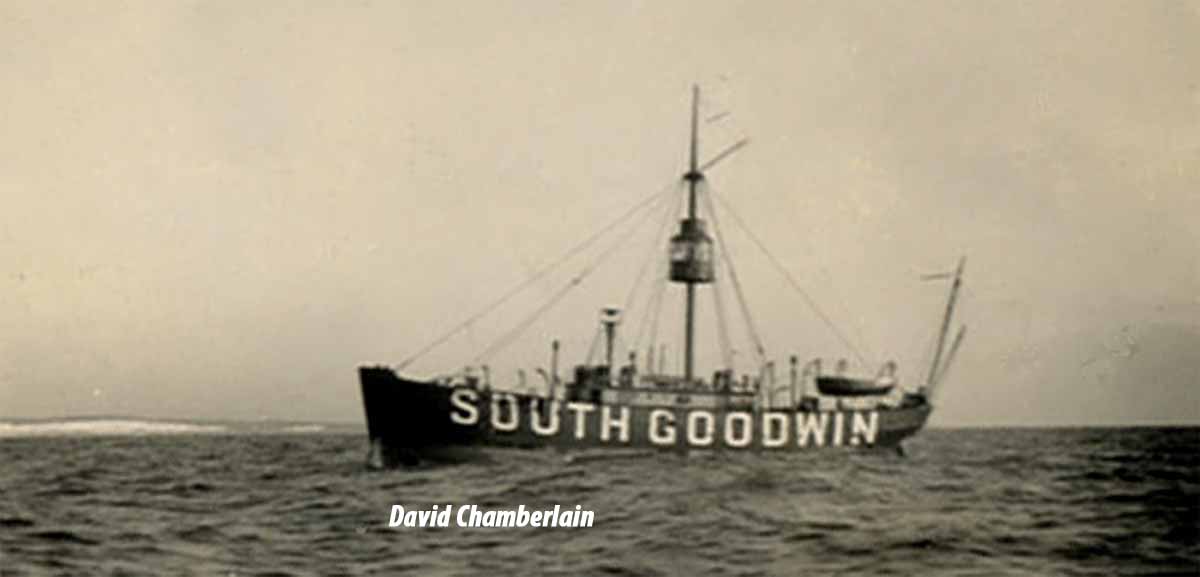
On the 21st October 1940, the South Goodwin lightship disappeared from her station close to the South Sand Head.
Fortunately the crew had been taken off a few days prior to this occurrence. The previously immune light vessels were now, according to Lord Haw-Haw, a legitimate target for the German military.
The attacks came quickly. Off Harwich, the Sunk lightship was badly shot up. Next was the automatic lightfloat, which marked the South Falls. The enemy did not even bother to waste ammunition – it was boarded by the Germans, who systematically smashed everything breakable by hand. Because the East Goodwin lightvessel was on the edge of a minefield the crew had already been evacuated, luckily for them as their ship was bombed and sunk.
When the South Goodwin disappeared it was speculated that she had been either bombed or torpedoed. There was even a rumour that the Germans had towed the vessel away, back to occupied France. However, what was for sure was that the lightship had definitely vanished. In its place, Trinity House moored Number One buoy to mark the position of the dangerous area close to the south end of the Goodwins.
After the war this incident was soon forgotten and the remaining lightships engaged their crews and carried on as normal. Lightships hit the news again when the terrible disaster of the ill fated South Goodwin lightship, LV 90, went aground on the Goodwins in 1954. Due to a worn link on her anchor chain she had broke adrift in a severe south west storm. The outcome was tragic, every crew member lost their life and the only survivor was a Ministry of Agriculture employee who was aboard to count and identify migrating birds.
The mystery of the missing South Goodwin lightvessel was solved in 1984. Local divers investigating an unknown shipwreck close to the Goodwins discovered a one hundred feet composite hull that was sitting upright on the seabed. As they swam around the wreck, they were puzzled to find that the vessel had very little superstructure. There was a large gaping hole on the portside bow at the height of the waterline. The jagged aperture seemed to have been caused by an upward thrust. It was concluded that this vessel had been sunk by a mine.

On later dives they explored inside the rotting hull and found a large bell, supported by two brass dolphins. When this magnificent trophy was cleaned up, the letters of LV69 were inscribed upon it. Further research to Trinity House revealed that this was the missing 271 ton lightvessel that was lost in 1940.
Once again, intrepid divers had unravelled another mystery that had been a secret for almost fifty years.
There is only one lightship left guarding the Goodwin Sands and that, the East Goodwin, is unmanned. The last South Goodwin lightvessel was removed and towed away in July, 2006. Again, as in 1940, her position has been replaced by a buoy.
